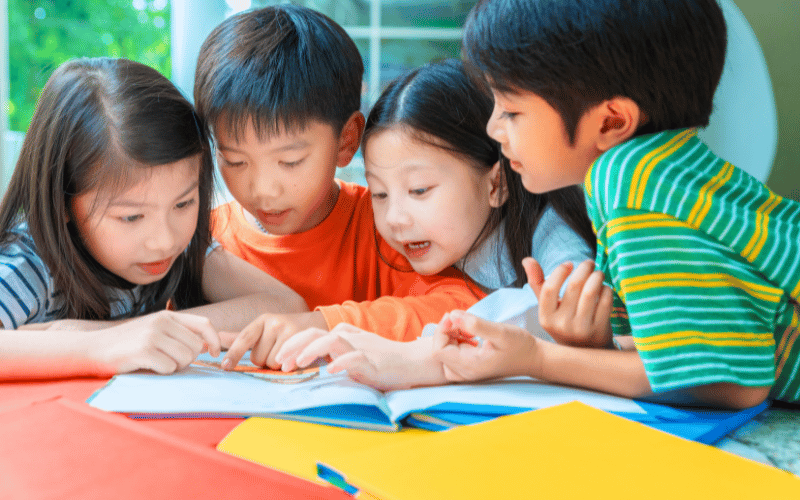We get Nippon Paint to share with us the effects of colours on a child’s development and how to use colours in a space strategically!
{{ vm.tagsGroup }}
21 Jul 2022
6 Min Read
Josephine Serena (Editor)
We get Nippon Paint to share with us the effects of colours on a child’s development and how to use colours in a space strategically!
Colours are all around us. They’re one of the most noticeable attributes of the environment around us. For children, observing and understanding colours is an essential foundation for their learning and development.
By infusing colours into their daily routine and activities, children can catch on to associate colours with certain objects they often come across.
In one way or another, especially among toddlers, colours do influence the behaviour of children especially in expressing their thoughts and emotions.
Generally, warmer colours like orange and yellow bring happiness, while cooler colours like blue, tend to have a more calming and outdoors effect. Naturally, cool hues increase productivity. Red stimulates brain activity. Green is very relaxing and is associated with nature and creativity. It’s often a matter of finding the right combination of colours in a child’s space to curate the most suitable learning environment for them.
As children, especially those below the age of 6 are still developing their cognitive senses and developing emotions, adults need to mindfully choose relevant colours for their space. Warm, cosy, or cool colours could be the best colours for children's space such as blue, yellow, and green.
The attraction to colour doesn’t begin at birth due to babies’ monochrome vision, instead, it comes with time. As they develop their vision, babies can distinguish among colours such as red, blue, green, and yellow.
At eight months, they begin to notice bright colours and this stimulates their minds. Exposing a baby to different shades of the same colour can help them make important colour connections early on in life rather than surrounding them with the same primary colours. Experts have said that showing patterns to a baby is important as it provides visual and cognitive stimulation for a growing baby as they focus on what they can see.
As for colours for spaces, primary colours appeal to children. Chromatic primary colours, red, green, yellow, and blue are especially appealing to young children. When infants are presented with the full chromatic spectrum they spend more time looking at red and blue than yellow and green.
Colours express emotion and situations and can be used as learning tools as it gives visual aid for children when it comes to memory. However, it needs to be balanced.
For example, blue is a colour that encourages creativity, but if overused, it can bring down the mood in a room. Hence, to paint a space for children, it should have a mixture of colours, instead of a single colour to help in developing a stronger sensory vision and emotion.
It’s important to note that walls make the largest surface in any building or space. Children often come in contact with walls by touching and laying their backs against the wall.
Due to the presence of bacteria and viruses on the walls, it could expose them to many harmful pathogens such as Covid-19, Hand Foot Mouth Disease (HFMD), and other harmful viruses and bacteria. In addition to that, oftentimes, walls also turn out to be the first drawing board for children, hence coating walls with paints that can easily remove crayon stains should be in consideration.
As you explore these different colours the most important element about curating a space for children is safety. Our Anti-Viral & Anti-Bacterial Range, which comprises of Nippon Paint VirusGuard, Spot-Less Plus, and Vinilex Fresh Plus comes with an improved formula and is proven to be 99.9% effective against the Covid-19 and other harmful viruses and bacteria on painted surfaces.
On top of that, these paints also include features like stain repellent, excellent washability and different finishings based on your preference.
We hope you’ve discovered the power of colours and how a conducive environment can help the development of a child. Be sure to consider all of these when setting up a space for children!
Nippon Paint is Taylor’s College’s paint sponsor for the Centre for Childhood Development & Innovation (CCDI) that was launched recently. CCDI will be utilised by the students of the Diploma in Early Childhood Education for practical lessons to care for children.
For enquiries about the Diploma in Early Childhood Education at Taylor’s College, feel free to reach out to our education counsellors.


